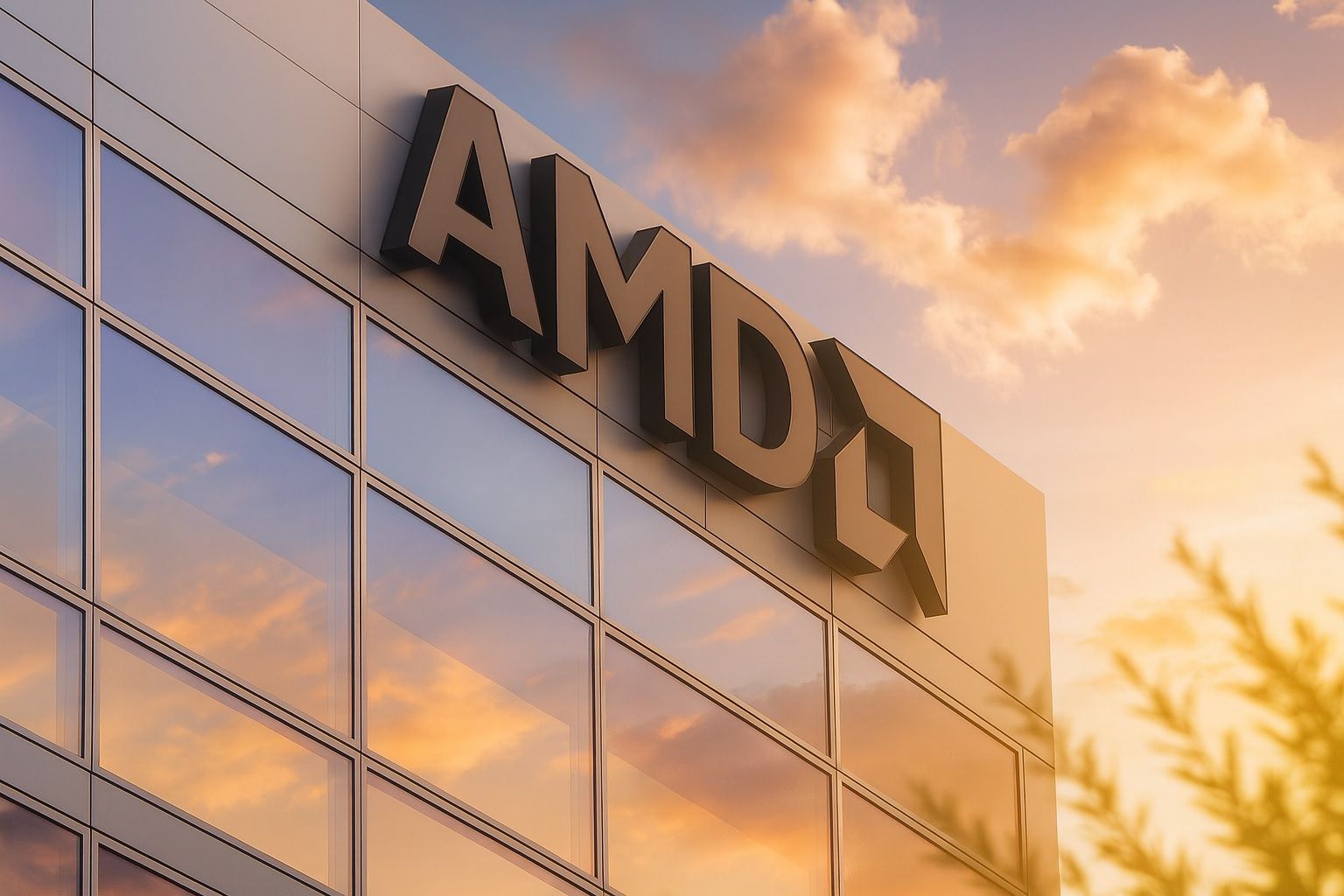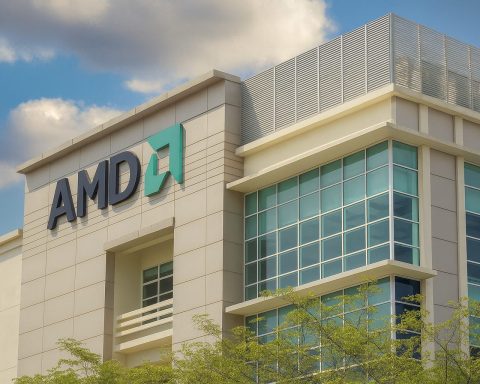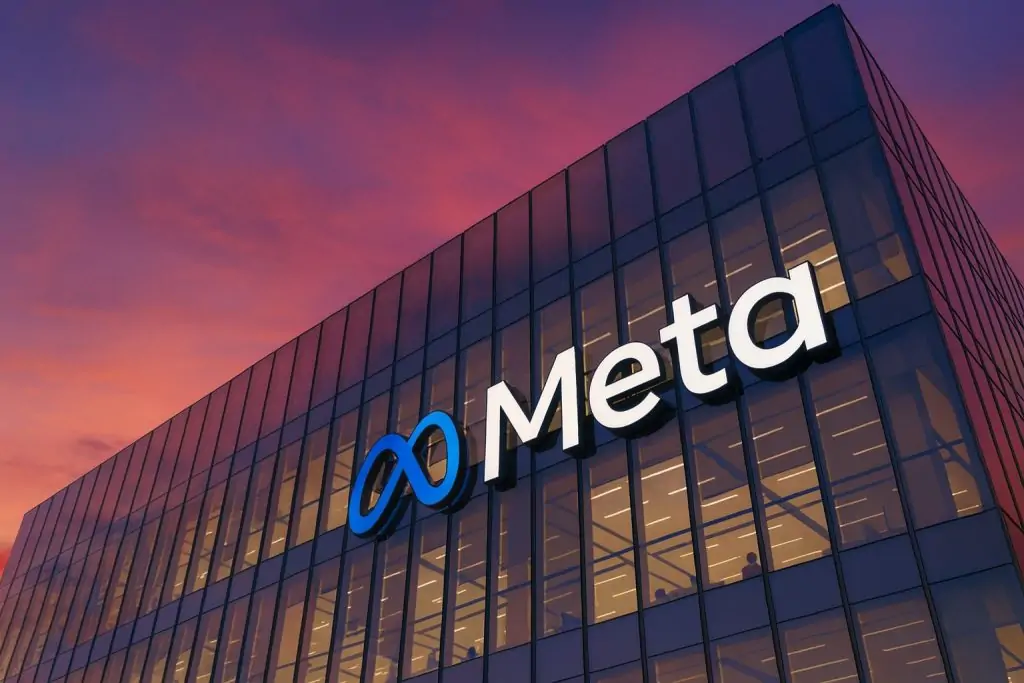Advanced Micro Devices (NASDAQ: AMD) heads into Monday’s session as one of the most talked‑about AI and semiconductor names on Wall Street. After a blockbuster Financial Analyst Day and record third‑quarter results, AMD stock has roughly doubled in 2025 and now commands a market value of around $400 billion. [1]
If you’re watching AMD stock before the U.S. market opens on Monday, November 17, 2025, here’s what actually matters right now—beyond the headlines.
1. Where AMD Stock Stands Heading Into Monday
AMD last closed at $246.81 per share, near its recent highs, after a week in which many AI names sold off but AMD still posted solid gains. [2]
According to Reuters, AMD shares are up about 97% year-to-date, powered by excitement around its data center and AI roadmap and a high‑profile partnership with OpenAI. [3]
A few key context points before the bell:
- Huge 2025 rally: The stock has risen roughly 100% this year, outpacing both the S&P 500 and the Nasdaq Composite. [4]
- Big week despite volatility: A new Motley Fool analysis notes AMD gained about 5.7% over the past week even as the Nasdaq slipped, thanks largely to its investor‑day presentation and subsequent analyst upgrades. [5]
- Massive market cap: MarketBeat data pegs AMD’s valuation at roughly $401–402 billion, putting it among the largest U.S. tech companies. [6]
Bottom line: AMD goes into Monday with high expectations and a lot of momentum already priced in.
2. Q3 2025 Earnings: Record Results and Confident Guidance
AMD’s third quarter of 2025 set multiple records and is the financial foundation for the current rally. In its official results, AMD reported: [7]
- Revenue: $9.2 billion (record), up 36% year-over-year and 20% sequentially
- GAAP gross margin: 52%; non‑GAAP gross margin: 54%
- GAAP EPS: $0.75; non‑GAAP EPS: $1.20, up 30% YoY
- Operating income (non‑GAAP): $2.2 billion, with a 24% operating margin
The segment breakdown highlights where the growth is coming from: [8]
- Data Center: $4.3 billion, up 22% YoY, driven by 5th‑Gen EPYC server CPUs and Instinct MI350 AI GPUs
- Client & Gaming combined: $4.0 billion, up 73% YoY
- Client revenue hit a record $2.8 billion, up 46% YoY, led by Ryzen CPUs
- Gaming revenue reached $1.3 billion, up a huge 181% YoY, helped by Radeon GPUs and semi‑custom console chips
For Q4 2025, AMD guided to about $9.6 billion in revenue (± $300 million), implying roughly 25% YoY and 4% sequential growth at the midpoint, with non‑GAAP gross margin around 54.5%. [9]
Crucially, AMD explicitly said these Q3 results and Q4 guidance do not include any revenue from MI308 AI GPU shipments to China, leaving additional upside if exports ramp faster than expected. [10]
3. The AI Data Center Story: $1 Trillion Market, $100 Billion Target
The single biggest driver of AMD’s stock right now is its long‑term AI and data center vision, unveiled at its Financial Analyst Day on November 11, 2025. [11]
Key takeaways from AMD and independent coverage:
- AMD now sees a $1 trillion data center chip market by 2030, mainly driven by AI infrastructure spending. [12]
- Management is targeting $100 billion in annual data center revenue within about five years. [13]
- Company‑level long‑term targets include:
- > 35% revenue CAGR
- > 35% non‑GAAP operating margin
- > $20 non‑GAAP EPS over the next 3–5 years [14]
- For the data center business specifically, AMD is aiming for > 60% revenue CAGR, and > 80% CAGR in data center AI revenue, as it ramps multiple GPU generations and full rack systems. [15]
Reuters reports that the stock jumped 7% after these goals were laid out, with analysts highlighting the potential upside from AMD’s partnerships with OpenAI and Oracle and its planned MI400 series AI accelerators and “Helios” rack‑scale system coming in 2026. [16]
This is what’s powering the current “AI leader in the making” narrative around AMD stock ahead of Monday’s open.
4. Mega Deals: OpenAI, Oracle, and the U.S. “AI Factory” Supercomputers
The bullish AI story isn’t just internal targets—it’s backed by big contracts and partnerships:
- OpenAI partnership:
- On October 6, AMD and OpenAI announced a 6‑gigawatt, multi‑year agreement to power OpenAI’s next‑generation AI infrastructure using multiple generations of Instinct GPUs, starting with MI450 deployments in the second half of 2026. [17]
- Analysts and independent research estimate this deal could be worth tens of billions of dollars in annual revenue over time, and Reuters notes that the OpenAI tie‑up is a key pillar of AMD’s long‑term data center targets. [18]
- Oracle “Helios” AI superclusters:
- Oracle Cloud Infrastructure plans to deploy a large AI supercluster built on AMD’s “Helios” rack design with Instinct MI450 GPUs and EPYC “Venice” CPUs, with an initial rollout of 50,000 GPUs in Q3 2026. [19]
- U.S. Department of Energy – Lux & Discovery systems:
- AMD and the U.S. DOE announced two new supercomputers at Oak Ridge National Laboratory: Lux, marketed as the first U.S. “AI factory” supercomputer, and Discovery, a next‑generation exascale system expected later in the decade. [20]
These marquee wins give AMD credible visibility into multi‑year AI infrastructure demand—one reason analysts have been comfortable raising their price targets even after a huge share‑price run.
5. Export Controls and China: A Key Risk (and Opportunity) to Watch
Export regulations around high‑end AI chips remain a swing factor for AMD’s outlook.
Earlier in 2025, new U.S. export controls on advanced AI accelerators to China forced AMD to book about $800 million in inventory‑related charges and initially prevented shipments of its Instinct MI308 products to Chinese customers. [21]
By Q3 2025, AMD emphasized that:
- Q3 results included no revenue from MI308 shipments to China.
- Q4 guidance also excludes any MI308 China revenue. [22]
More recently, hardware press reports say AMD has received “some” export licenses allowing limited MI308 shipments into China, even as Nvidia has faced more restrictive treatment on its top‑end AI GPUs. [23]
For Monday’s session and beyond, investors will be asking:
- Does AMD get broader approval to ship higher‑performance GPUs into China?
- How much incremental revenue could this add on top of existing guidance?
- Could policy change again and restrict shipments just as AMD ramps supply?
The long‑term AI story looks powerful, but this regulatory backdrop is one of the biggest uncertainties around the stock.
6. AMD Beyond the Data Center: AI PCs and Gaming Momentum
While AI data center chips get the headlines, AMD’s Client and Gaming businesses are quietly turning into powerful growth engines.
From AMD’s own Q3 breakdown and its “From Momentum to Market Leadership” blog tied to Analyst Day: [24]
- Client & Gaming revenue hit $4.0 billion in Q3, up 73% YoY.
- Client revenue was a record $2.8 billion, driven by strong Ryzen CPU sales, including popular chips like the Ryzen 7 9800X3D, which Tom’s Hardware reports has dominated Amazon’s CPU bestseller list. [25]
- Gaming revenue climbed to $1.3 billion, up 181% YoY, boosted by Radeon GPUs and higher semi‑custom revenue from game consoles. [26]
On the AI PC front, AMD says:
- The Ryzen AI PC portfolio has grown 2.5× year‑over‑year, with more than 250 AI‑capable PC platforms now on the market.
- Management is targeting 40% client revenue market share over the next three to five years.
- Upcoming “Gorgon” and “Medusa” client chips are expected to deliver up to 10× AI performance gains versus 2024 systems. [27]
This matters for Monday and beyond because it supports the case that AMD is not just a “one‑product AI GPU story,” but a diversified compute company spanning data center, PCs, gaming, embedded, and edge AI.
7. What Wall Street Is Saying About AMD Stock Right Now
Analyst sentiment is overwhelmingly positive—but not unanimous.
Ratings and Targets
Data from multiple aggregators shows:
- Consensus rating: “Buy” / “Strong Buy”
- StockAnalysis reports that AMD has no sell ratings and an average “Buy” rating, with an average 12‑month price target around $240, slightly below the current share price. [28]
- Quiver Quantitative notes 18 buy ratings and zero sell ratings, with a median price target of $280, and several recent raises after Analyst Day:
- Targets between $260 and $345 from Morgan Stanley, Evercore ISI, Mizuho, Rosenblatt, BofA, Roth, Piper Sandler, and others. [29]
- Stifel recently reiterated its Buy rating with a $280 price target, calling out the strength of AMD’s long‑term growth plan. [30]
Valuation Concerns
At roughly $247 per share and consensus 2026 EPS estimates around $6.35, AMD trades at a forward P/E of about 39×, well above the market average. [31]
Recent pieces from Zacks and other outlets highlight that:
- AMD’s forecast of a $1 trillion data center market and >80% AI revenue CAGR is exciting, but
- High multiples and intense competition with Nvidia mean sentiment could reverse quickly if AI spending cools or execution slips. [32]
Independent commentators on platforms like Seeking Alpha also point to AMD’s rich EV/EBITDA and free‑cash‑flow multiples and suggest that even strong quarters can be overshadowed by valuation worries. [33]
In short: Wall Street loves AMD’s story, but many analysts are explicitly telling clients that execution and AI spending durability must stay strong to justify today’s price.
8. The Bear Case: AI Bubble, Nvidia, and Execution Risk
Even if you’re bullish, it’s worth knowing the main arguments from skeptics heading into Monday’s trade.
- Potential AI bubble:
Several analysts, including those cited by Investopedia and Barron’s, warn that the current AI infrastructure boom could prove cyclical or overbuilt, which would be a problem for a stock priced for years of 30–60% growth. [34] - Nvidia’s dominance:
Nvidia still controls roughly 80% of the AI GPU market, while AMD is working from a single‑digit share base despite its new wins. Barron’s notes that AMD needs more large customers—potentially including Amazon or other hyperscalers—to fully realize its ambitions. [35] - Margin and capital intensity risks:
Analyst commentary after AMD’s investor day points to risks from:- Heavy spending to win share in data centers
- Possible licensing and IP pressures related to Arm and other partners
- The cost of supporting a multi‑generation AI GPU and system roadmap [36]
- Policy and export uncertainty:
U.S. export rules on AI accelerators have already cost AMD hundreds of millions of dollars and forced rapid product adjustments. Future rule changes—positive or negative—could materially move earnings. [37]
For traders watching the tape on Monday, any new headlines that touch on these themes—especially AI spending, China exports, or big customer wins/losses—could move AMD sharply.
9. 7 Things to Watch Before and After the Bell on November 17, 2025
As you prepare for Monday’s session, here are seven specific things to monitor around AMD stock:
- Pre‑market and early‑session price action
- Does AMD extend last week’s post‑Analyst Day gains, or do investors start locking in profits after the run‑up? [38]
- Follow‑through on analyst upgrades
- Watch for any new price‑target changes or rating shifts published Monday morning in reaction to the Financial Analyst Day replay and weekend coverage. [39]
- Commentary on AI demand and capex
- Any updates from major cloud providers, enterprise IT surveys, or macro data that suggest AI capex is accelerating or slowing will feed directly into AMD’s long‑term growth narrative. [40]
- News around MI308 export licenses or China demand
- Headlines about expanded or tightened export approvals could swing sentiment quickly given how much of AMD’s growth is tied to high‑end accelerators. [41]
- Relative performance vs. Nvidia and other AI leaders
- If Nvidia, Broadcom, or other AI infrastructure names sell off while AMD rises (or vice versa), that tells you how much of the move is AMD‑specific versus sector‑wide. [42]
- Any fresh commentary on the OpenAI and DOE deals
- Investor notes or interviews quantifying revenue from the OpenAI 6GW deal and the Lux/Discovery supercomputers could refine expectations for AMD’s long‑term data center revenue path. [43]
- Volatility spikes and volume
- After such a big run, AMD is likely to remain high‑beta. Spikes in volume well above the 50‑day average can signal whether institutions are adding to positions or trimming exposure. [44]
Final Word: High Potential, High Expectations
Going into the November 17, 2025 open, AMD is positioned as:
- A core AI and data center growth story with bold targets and marquee partnerships
- A leader in AI PCs and gaming, not just a data center GPU vendor
- A stock with lofty expectations and valuation, where execution, AI demand, and policy decisions all matter enormously
For investors and traders alike, AMD is likely to remain a high‑volatility, high‑story‑content name around the open and into year‑end.
This article is for informational and educational purposes only and is not investment advice. Always do your own research and consider speaking with a qualified financial advisor before making trading or investment decisions.
References
1. www.reuters.com, 2. www.nasdaq.com, 3. www.reuters.com, 4. www.reuters.com, 5. www.nasdaq.com, 6. www.marketbeat.com, 7. ir.amd.com, 8. ir.amd.com, 9. ir.amd.com, 10. ir.amd.com, 11. www.amd.com, 12. www.reuters.com, 13. www.reuters.com, 14. www.amd.com, 15. www.amd.com, 16. www.reuters.com, 17. www.amd.com, 18. www.reuters.com, 19. ir.amd.com, 20. www.amd.com, 21. ir.amd.com, 22. ir.amd.com, 23. overclock3d.net, 24. ir.amd.com, 25. www.tomshardware.com, 26. ir.amd.com, 27. www.amd.com, 28. stockanalysis.com, 29. www.quiverquant.com, 30. www.investing.com, 31. stockanalysis.com, 32. tickernerd.com, 33. seekingalpha.com, 34. www.investopedia.com, 35. www.barrons.com, 36. www.nasdaq.com, 37. ir.amd.com, 38. www.nasdaq.com, 39. stockanalysis.com, 40. www.reuters.com, 41. overclock3d.net, 42. www.barrons.com, 43. ir.amd.com, 44. www.marketbeat.com








